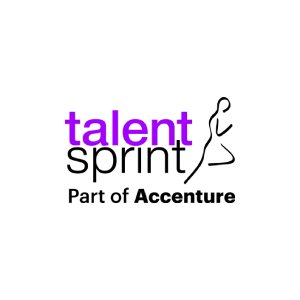How to Build a GitHub Portfolio as a Fresher?

When you’re a fresher stepping into the tech world, a polished resume is just the beginning. Recruiters want proof that you can build, not just list skills.
You can think of GitHub as your personal showroom at that point, a place where every commit, project, and README speaks louder than words. Whether you’re applying for your first job or an internship, it’s the living evidence of your potential.
In this blog, we’ll walk through how to turn a blank GitHub page into a professional portfolio that tells your story, highlights your projects, and makes hiring managers say,
“We need to talk to this candidate.”
Why is it important to build a GitHub Portfolio?
If you’re just starting out in tech, think of your GitHub profile as more than a folder full of code; it’s your personal shop window for the world to see. Here’s why putting time into it can make all the difference:
1. Your Skills Come Alive
A resume tells people what you know, but a GitHub portfolio shows how you use that knowledge.
2. Instant Credibility for Freshers
When you don’t have years of job experience, a polished GitHub profile fills the gap.
3. Proof of Growth
Every commit and update tells a story of progress. Consistent activity shows curiosity, discipline, and a genuine love for learning, qualities employers notice right away.
4. Opens Doors You Didn’t Expect
A well-presented profile can spark interview calls, freelance gigs, or internship offers, sometimes before you’ve sent an application.
5. A Place to Connect and Collaborate
Sharing projects and contributing to open-source lets you work with other developers, get feedback, and build a network of contacts who might recommend you for opportunities.
In short, your GitHub portfolio is your proof of passion and potential. It’s where your code speaks louder than words and shows that you’re not just learning technology, you’re already putting it to work.
Also Read: Are you a Fresher and want to know how to write your first Resume? Here's your Guide.
Step-by-Step Guide to Build a Standout GitHub Portfolio as a Fresher
Now that you know why a GitHub portfolio matters, let’s see how to build one. A few smart steps, like a clear bio, well-documented projects, and regular updates, can turn your profile into a showcase that speaks for you before any interview.
Step 1: Set Up a Professional Profile
Your GitHub profile makes an impact before anyone looks at your code. Setting up a professional profile serves as your digital handshake with potential employers and collaborators in the tech community.
- Choose a clear and professional username.
Your GitHub identity needs a suitable username. Pick a variation of your actual name instead of casual nicknames, gamertags, or Twitter handles.
- Add a high-quality profile photo.
First impressions matter substantially. A clear headshot presents you professionally. The technical specifications for best results include:
- File format: PNG, JPG, or GIF
- Size: Less than 1MB
- Dimensions: Ideally 500x500 pixels (maximum 3000x3000).
- Write a concise and relevant bio
The bio section should include:
- Your current role or educational status
- Primary technical skills or interests
- Career aspirations
- Optional: Professional pronouns and location
A compelling bio reads like: "Recent computer science graduate specialising in web development. Passionate about React and Node.js. Actively seeking developer positions."
- Create a profile README to introduce yourself.
This feature adds an expanded "About Me" section at the top of your profile. Here's how to set it up:
- Create a new repository matching your username exactly
- Set it to "Public"
- Check "Add a README file" during creation
- Use Markdown to customise and include:
- A friendly introduction
- Detailed skills breakdown
- Current projects or learning goals
- Contact information and social links
- Optional: GitHub stats or skill badges
Visitor counters or dynamic content can add visual appeal. Update your README regularly with new accomplishments and goals.
Step 2: Select Your Best Projects
The lifeblood of an impressive GitHub portfolio comes from carefully curated projects. Your repositories serve as tangible proof of your capabilities to potential employers.
- Pin 3–5 repositories that reflect your skills
GitHub allows you to pin up to six repositories to the top of your profile page. You should select 3-5 projects that best represent your technical breadth and problem-solving abilities. These pinned projects are the first items visitors will see and act as your coding highlight reel.
- Write detailed and structured README files
Each project needs a detailed README.md file. This document introduces your project and should contain:
- Project title and clear description
- Installation/usage instructions
- Technologies used
- Screenshots or GIFs showing your project in action
- Challenges faced and solutions implemented
- Include live demos or GitHub Pages portfolio examples
GitHub Pages offers a great way to host live demonstrations of your projects. Adding these demo links to your README files using syntax like [Live Demo](linkurl) makes your work accessible. Recruiters can see your work in action without downloading or installing anything.
- Highlight the technologies used and your role in the project
Make sure to show which technologies each project showcases. Team projects should clearly outline your specific contributions and decision-making process.
Step 3: Keep Code Clean and Organised
Your code's structure and organisation show how detail-oriented and mature you are as a developer. Recruiters often judge your coding habits before they look at functionality. Clean code is essential to make your GitHub portfolio stand out.
- Use consistent naming conventions and folder structures
A clear naming system for repositories helps visitors quickly understand what each project does. Your project names should be descriptive and self-explanatory. Simple alphanumeric characters with hyphens or underscores work best - avoid special characters.
- Add comments and documentation where needed
Code should have well-placed comments that explain its functionality, key variables, and functions.
- Include test files and usage examples.
Tests prove you care about reliable and maintainable code. Create a test folder with unit and integration tests to verify your code works correctly. On top of that, add examples that show practical ways to use your project. This helps others understand how to implement it quickly.
Step 4: Show Consistent Activity
Your GitHub activity consistently shows your commitment as a developer. Recruiters value persistence over perfection when they review GitHub portfolio examples from freshers.
- Commit regularly to active repositories.
Small, focused commits work better than occasional massive changes. Each commit should represent a logical, atomic unit of work that tackles a specific idea. Your commit log ultimately tells the story of your development process, which helps others understand your approach.
- Participate in issue discussions and pull requests
Pull requests showcase your collaborative abilities and problem-solving skills. You should use supported keywords like "Fixes" or "Resolves" to link pull requests to relevant issues. This approach shows you understand professional development practices.
- Use GitHub Actions to automate workflows.
GitHub Actions gives you powerful automation capabilities for your repositories. You can set up workflows that run tests or deployment processes automatically when you push new code. You can create workflows that trigger on specific events like pull requests or new issues.
Step 5: Contribute to Open Source (Optional but Powerful)
Your GitHub portfolio becomes more impressive when you contribute to open source projects. Open source participation demonstrates both technical ability and collaborative skills that employers value highly in development teams.
- Find beginner-friendly repositories with 'good first issue' tags
Many open source projects welcome newcomers by tagging issues specifically as 'good first issue' or 'help wanted'. You can find these opportunities in the Issues tab of repositories and use the Labels filter to select these beginner-friendly tags.
- Start with documentation or small bug fixes.
Small contributions help you understand the project's structure without requiring deep code knowledge. You can also start by improving error messages, fixing broken links, or adding examples to clarify instructions. These small tasks give you valuable experience with Git workflows and contributor processes.
- Track your contributions and learning in a LEARNING.md file.
A dedicated LEARNING.md file in your repository helps document your open source experience. This file should record the projects you've contributed to, challenges you faced, solutions you found, and skills you learned throughout the process.
Step 6: Highlight Continuous Learning
The tech world changes faster every day, and showing how you learn is just as important as showcasing completed projects. Demonstrating continuous improvement signals adaptability – employers value this trait highly in junior developers.
- Use GitHub Learning Lab to build new skills.
GitHub Learning Lab's interactive courses work right inside GitHub's interface. The platform pairs GitHub's API with a friendly bot that guides you through hands-on tasks in real GitHub workspaces. You'll learn crucial skills from GitHub basics to Markdown, GitHub Pages, and fixing merge conflicts.
- Create repositories for course projects and tutorials
Make a dedicated repository with proper structure whenever you finish a tutorial or online course. This shows potential employers your learning path clearly. Each repository needs to highlight your developed skills and the technologies you've worked with.
- Document your learning trip and technical decisions.
Add LEARNING.md files to your repositories to track your progress, challenges, and solutions you've found. These documents show your analytical thinking and how you solve problems. Regular updates to these files prove your dedication to growth and support the story of continuous improvement that employers want to see in freshers' first GitHub portfolio examples.
Tips to Stand Out
Your GitHub profile needs to stand out after you become skilled at creating core portfolio elements. These smart improvements can boost your visibility to potential employers by a lot.
1. Add a blog section or learning journal.
Your latest articles on your GitHub profile show your industry knowledge and prove you're willing to learn.
2. Use GitHub Insights to track profile views.
A profile views counter helps you learn about your profile's visitor traffic. This tool shows which activities bring people to your portfolio.
3. Link your GitHub to LinkedIn and your resume.
Add your GitHub profile to LinkedIn's contact information. Employers get a complete view of your professional network and technical projects through this connection.
Common Mistakes to Avoid
You might have amazing coding skills, but still get overlooked because of these common GitHub mistakes. Your GitHub profile represents your professional image in the tech community. You need to avoid these pitfalls.
1. Empty Projects
Don’t make many repos with no code. Upload a few good projects and finish them.
2. No Readme
Always add a README file. Write what the project does and how to run it.
3. Messy Code
Use clean code, clear names, and short comments so others can read it easily.
4. Bad Commit Messages
Make small commits with simple, clear messages. Don’t push everything at once.
5. Only One Type of Work
Show different skills. Mix web, data, or small tools.
6. Incomplete Profile
Add a bio, a photo, and pin your best projects.
7. Only School Work
Add projects that solve real problems, not just homework.
8. No Updates
Keep adding or improving code so it looks active.
Conclusion
Starting a GitHub portfolio can feel big, but it begins with one small step. Upload a single project, anything you’re proud of, then keep improving it. Add new features, clean up code, and share updates regularly. Consistency shows commitment, and that matters more than perfect code. Your steady effort will speak loudly to anyone reviewing your profile.
“Great software starts with a single commit.”
Frequently Asked Questions
Q1. How do I create an impressive GitHub portfolio as a fresher?
Start by setting up a professional profile with a clear username and concise bio. Select 3-5 of your best projects that showcase your skills, ensuring they have detailed README files. Keep your code clean and organised, and show consistent activity through regular commits and contributions. Consider adding open-source contributions and documenting your learning journey to stand out.
Q2. What types of projects should I include in my GitHub portfolio?
Include projects that align with your career goals and demonstrate your technical skills. For web developers, this could mean web applications; for mobile developers, mobile apps. Ensure your projects showcase the technologies and skills relevant to your desired job role. Choose projects that interest you personally, as this will help you stay motivated and provide talking points during interviews.
Q3. How important is documentation in my GitHub projects?
Documentation is crucial. Each project should have a comprehensive README file that includes the project title, description, installation instructions, usage examples, and technologies used. Well-documented projects are 65% more likely to receive interview callbacks. Good documentation not only showcases your communication skills but also makes your projects more accessible to potential employers.

TalentSprint
TalentSprint is a leading deep-tech education company. It partners with esteemed academic institutions and global corporations to offer advanced learning programs in deep-tech, management, and emerging technologies. Known for its high-impact programs co-created with think tanks and experts, TalentSprint blends academic expertise with practical industry experience.



